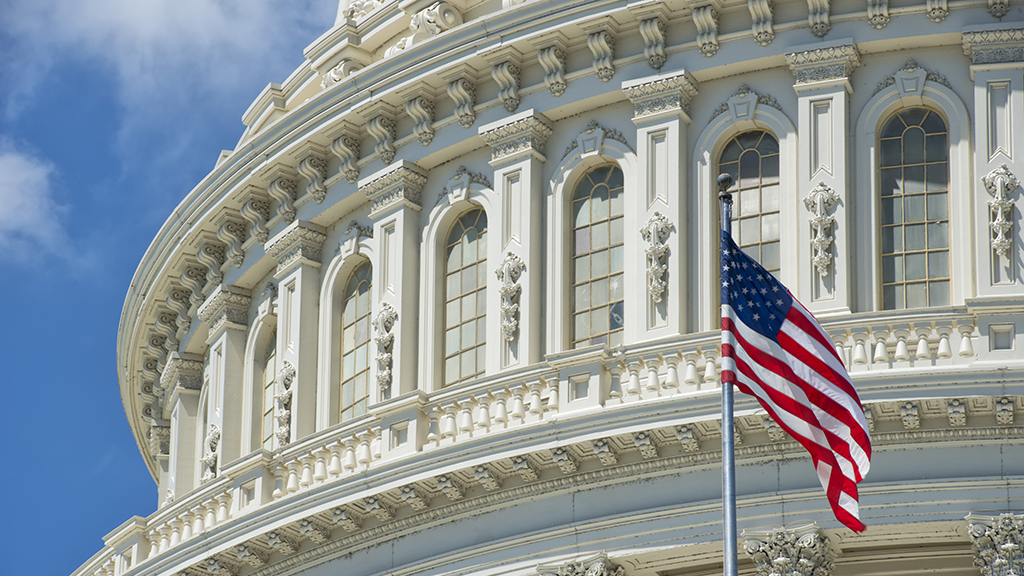Legislative Update
Education Funding in the COVID Relief Bill
By Jodi Peterson
Posted on 2021-01-07

Disclaimer: The views expressed in this blog post are those of the author(s) and do not necessarily reflect the official position of the National Science Teaching Association (NSTA).
The Congressional COVID-19 relief bill allocates roughly $82 billion for the Education Stabilization Fund. Specifically, the education provisions and funding streams follow the same structure as the CARES Act that was passed last April, with $54.3 billion going to elementary and secondary education, $22.7 billion for higher education, and $4.1 billion for governors to spend on various educational needs.
Funds will be allocated to states and districts based on Title I, just like the CARES Act. Funds may be used for activities authorized by the major federal education programs, such as the Every Student Succeeds Act and the Carl D. Perkins Career and Technical Assistance Act. In addition, funding can be used for other specific purposes including:
- Coordinating preparedness and response efforts with the other state, local, tribal or territorial entities
- Addressing the unique needs of disadvantaged populations
- Purchasing education technology (hardware, software, and connectivity)
- Providing mental health services and support
- Addressing student learning loss, including improving distance learning engagement
- Repairing and improving school facilities to reduce the risk of virus transmission and exposure to environmental health hazards
Many advocates were concerned that the bill did not include funding to address the so-called “homework gap” via the E-Rate program. In addition, it does not include funding for state and local governments, which will be crucial to education in the coming months.
A summary of the bill is available here.
Find out how much your state will be receiving here.
Congress Approves Annual Appropriations Bills
The FY2021 Omnibus and the COVID stimulus package were rolled into one massive bill this year. For FY21 programs, the Department of Education received a modest 1.6 percent increase over last year, and most programs received the same amount they received last year.
Overall, the bill provides $40.6 billion for K-12 education programs, including:
- $16.5 billion for Title I Grants to Local Educational Agencies, an increase of $227 million above the 2020 enacted level.
- $14.1 billion for Special Education, an increase of $186 million above the 2020 enacted level.
- $12.9 billion for Part B Grants to States, an increase of $173 million above the 2020 enacted level.
- $2.1 billion for Supporting Effective Instruction State Grants (Title II-A), an increase of $11.3 million over the 2020 enacted level.
- $797 million for English Language Acquisition State Grants, an increase of $10 million above the 2020 enacted level.
- $1.2 billion for Student Support and Academic Enrichment State Grants (Title IV-A), an increase of $10 million above the 2020 enacted level.
- $1.3 billion for Nita M. Lowey 21st Century Community Learning Centers, an increase of $10 million above the 2020 enacted level.
- $107 million for Education for Homeless Children and Youth, an increase of $5 million above the 2020 enacted level.
- $1.5 billion for Impact Aid, an increase of $15 million over the 2020 enacted level.
- Additional support for the Social-Emotional Learning (SEL) Initiative created in the fiscal year 2020 bill to fund SEL and “whole child” approaches to education.
- $67 million within the Education Innovation and Research program, an increase of $2 million above the 2020 enacted level, for grants.
Read the full Democratic summary of the legislation.
Congress also provided the National Science Foundation with $8.5 billion, an increase of $208.4 million above the FY 2020 enacted level and $745.4 million above the President’s budget request. $968 million was provided to NSF Education and Human Resources, an increase of $28 million above FY 2020 and $37 million above the President’s budget request.
Miguel Cardona Named Nominee for Secretary of Education
As widely reported, President-elect Biden has nominated Miguel Cardona to be the next Secretary of Education. Cardona is currently the commissioner of the Connecticut Department of Education. Read the profile of the nominee in this article from The Hechinger Report.
Rural STEM Education Act Introduced in the Senate
On December 8, S. Senator Jacky Rosen (D-NV), a member of the Senate Committee on Health, Education, Labor and Pensions (HELP) and Senator Roger Wicker (R-MS), introduced the Rural STEM Education Act. The bill would direct the National Science Foundation (NSF) to support rural STEM education and workforce development through grants for research on teaching STEM in rural schools, barriers rural students face in accessing STEM education, and solutions to improve the participation of rural preK-12 students in STEM.
Read more here and about the similar legislation that passed the House of Representatives last fall. Read more on the Senate bill here.
Other Notable Developments
Last month, the White House Office of Science and Technology Policy (OSTP) released the federal STEM education annual progress report. Access the report here.
Also last month, U.S. Secretary of Education Betsy DeVos announced $185 million in new grant funding for 28 school districts, institutions of higher education and nonprofit organizations across the United States as part of the Education Innovation and Research (EIR) program. Over $66 million in grants are focused on STEM education; other grants will go to serving rural areas and support Social and Emotional Learning projects. More here.
Jodi Peterson is the Assistant Executive Director of Communications, Legislative & Public Affairs for the National Science Teaching Association (NSTA) and Chair of the STEM Education Coalition. Reach her via e-mail at jpeterson@nsta.org or via Twitter at @stemedadvocate.
The mission of NSTA is to promote excellence and innovation in science teaching and learning for all.


